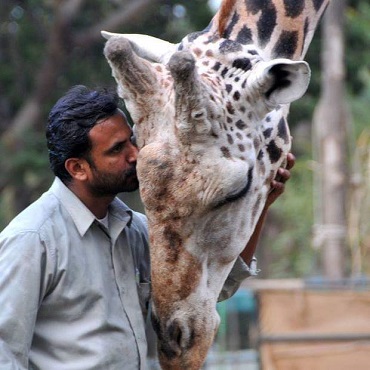Scientific Program

Prayag Siddalingappa
Assistant Professor, Department of Animal Genetics and Breeding, Veterinary College, HEBBAL, Bangalore, India
Biography:
Dr. Prayag Siddalingappa is currently working as Assistant Professor in Department of Animal genetics and Breeding Veterinary College, Bangalore, KVAFSU, Bidar. He holds the experience of working in wildlife field since 2003 till date in different capacities. He participated in PREDICT WORKSHOP on EMERGING WILDLIFE INFECTIOUS DISEASES conducted by USAID. Project on DNA Barcoding of Giraffe in Indian zoo and their genetic characterization has been successfully completed by him. He participated in IMMOBILIZATION , CAPTURE & TRANSPORTATION OF WILD ANIMALS conducted by KARNATAKA FOREST DEPT & WILD LIFE INSTITUTE OF INDIA at BANDIPUR to mention major few.
Abstract
Tigers are highly elusive ,adaptable species and are also found in and around human dominated areas and agricultural lands.In India Human-Tiger Interaction is becoming more common and is now major issue in forest side villages, causing loss of lives of humans as well as animals. The present case study aims to provide a brief analysis of the work carried out by Karnataka Forest Department to rescue and translocate the conflict causing Tiger from G.S Betta range of Bandipur Tiger Reserve Karnataka to a safer place away from human interference. An adult Tiger in G.S Betta range was suspected to eaten an elderly farmer in his agricultural field during cattle grazing in 2 September 2019 followed by one more human kill in 8 October 2019 causing public uproar and hostility. We present our observations made of tiger by villagers in (September 2019), later field study was done after second suspected kill made by the same tiger until the tiger was rescued, translocated and monitored for rehabilitation. Scientific conflict mitigation measures were followed as per National Tiger Conservation Authority (NTCA) protocol, and IUCN Guidelines, under field conditions. The precautionary measures to adopted were explained to the villagers and awareness was created in the impacted villages.The individual tiger was identified using pug marks for sex identification on field, camera traps images for unique stripe pattern and was then successfully rescued by chemical immobilisation, transported in cage to Mysore Zoo's Rescue and rehabilitation centre for medical examination. When all evidences were collated, it was observed that the tiger in question did not seek human or livestock prey outside the PA. It must be accidental encounter with humans. It can be concluded that for long term solution, better understanding of animal behaviour is a must. Along with this awareness among people about dispersing tigers would influence their perception of man-eater tigers. The key to success of this operation was the decision made by KFD based on scientific techniques to identify the tiger and capture it.
- Animal Growth & Development
- Animal Health: Physiological & Molecular Indicators
- Genetics and Animal Breeding
- Veterinary Medicine
- Animal Biotechnology
- Livestock Production
- Animal Nutrition & Wellbeing
- Dairy Food Production & Quality Control
- Agriculture, Animals and the Environment
- Animal Behavior and Animal Welfare
- Neonatal Survival and Management

